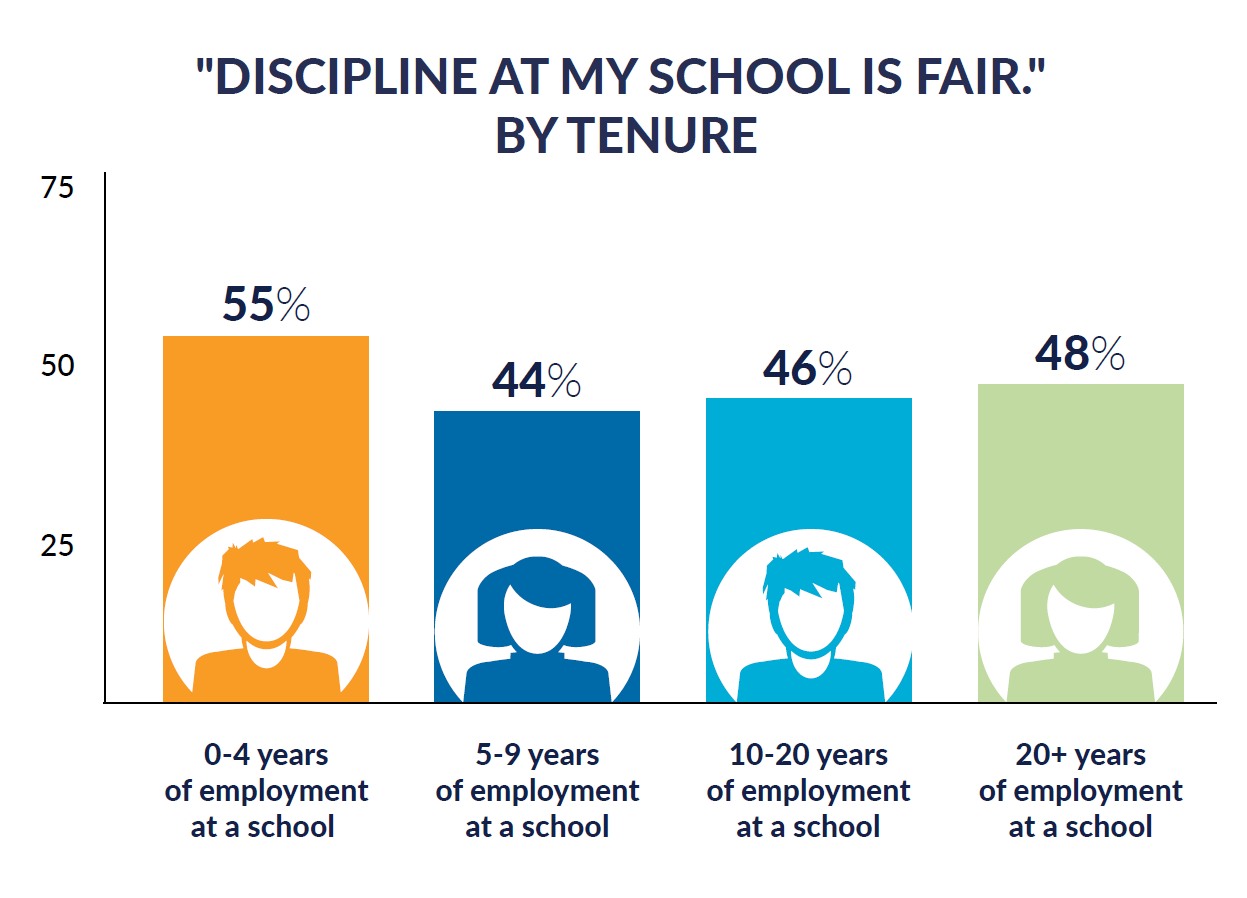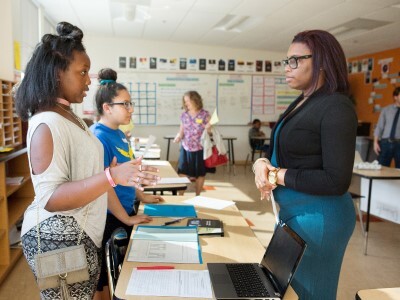Reimagining Assessment
How’s Discipline at Your School? Don’t Just Look at Referral and Suspension Data, Get Perception Data
Topics

Educators are rethinking the purposes, forms, and nature of assessment. Beyond testing mastery of traditional content knowledge—an essential task, but not nearly sufficient—educators are designing assessment for learning as an integral part of the learning process.
The results of a national study from YouthTruth on school staff, students, and family perceptions of discipline can help start conversations about discipline policy and leading by listening.
As a student teacher, and like most early-career educators, I struggled with classroom management and discipline. The beautifully articulated theories of positive behavior intervention and support that I was learning through my credentialing program seemed at odds with the realities of time and resource constraints in the school setting.
In the end, I did not stay in the classroom. I became a turnover statistic—though I could predict even then that I would remain in education (and have for the last 17 years).
We know that teacher retention improves outcomes for students, and conversely, that teacher turnover can harm student achievement. Around 16 percent of educators leave the field every year, and we know that many teachers, like me, leave within the first five years. Teachers report that the biggest reasons they leave are lack of autonomy and voice, alongside issues of culture and, in particular, discipline. What’s more, turnover is costly—shorting districts upwards of $2.2 billion a year.
Discipline and fairness are key aspects of a school's culture. All schools should be asking students, teachers, and parents this essential question: Is discipline at this school fair, and for whom?
YouthTruth, the national nonprofit that I now help lead, collects perception data from students and stakeholders on the topics that research says matter most to creating schools with strong climate and culture. Through validated survey instruments and tailored advisory services, YouthTruth partners with schools, districts, and education funders to enhance learning for all students. Since 2008, we’ve surveyed over one million students and over 90,000 stakeholders. Discipline is one of the topics about which we gather anonymous feedback and was an area of research inquiry for our team. As a former teacher, I was personally curious about teachers’ perspectives of discipline; and from my current work with schools across the country, I knew that I was not alone.
We recently analyzed the survey responses of more than 104,000 students, parents/guardians, and instructional and non-instructional school staff members across 132 secondary schools. The data was gathered between fall 2016 and the end of 2018, and we looked at responses to just one of the questions in our surveys: Is discipline at this school fair?
We wanted to know: How do school staff feel in response to this question? What about students? What about their families? (Read the full report here.)
It turns out that staff perception of discipline falls in between that of students and families, with 50 percent of school staff rating discipline positively. Students rate it the lowest at 40 percent, and parents rate it the most favorably of all three groups, at 59 percent.
When we take a closer look at staff perceptions, however, we see that ratings of fairness of discipline are lower for more tenured staff members, dropping around the five-year mark of employment at a school.

This is an example of the nuanced insight that can be gleaned when we ask school stakeholders about their experiences directly, and reinforces the value of gathering perception feedback in schools. It helps start conversations that might not otherwise take place:
- What causes teacher perceptions of discipline to be lower among more tenured staff?
- Is there a lack of trust in discipline policies?
- Is this about teacher agency?
- What structural improvements could be made to the school’s discipline policies and procedures?
Teachers who make it past the first five years experience a wide range of perspectives of discipline. As one teacher commented anonymously through the survey,
“Students do not feel like they have a voice. They express their concerns, just to be shut down and dismissed. Discipline is not consistent. Students should feel like they can walk into administration and be heard. Most of the time, they feel disrespected.”
Interestingly, in our analysis, students and staff in the same school tend to agree about the state of discipline. Of “top performing schools” in the eyes of students (that is, the top 25 percent of schools in our sample based on student ratings of discipline), 75 percent also receive above typical ratings by staff (that is, in the top half of schools in our sample based on staff members' ratings of discipline).
So, how should we measure whether or not we’re getting discipline right?
With the roll back of discipline guidelines by Secretary DeVos last December, we can’t count on federal guidelines to help keep us accountable. We need to listen to the people most directly affected.
My hope is that this data can be a conversation starter for your staff and district leadership to talk about discipline policy and recognize the benefits of leading through listening—first and foremost to students, but also to school staff as well as families. Discipline and fairness are key aspects of a school's culture. All schools should be asking students, teachers, and parents this essential question: Is discipline at this school fair, and for whom?




